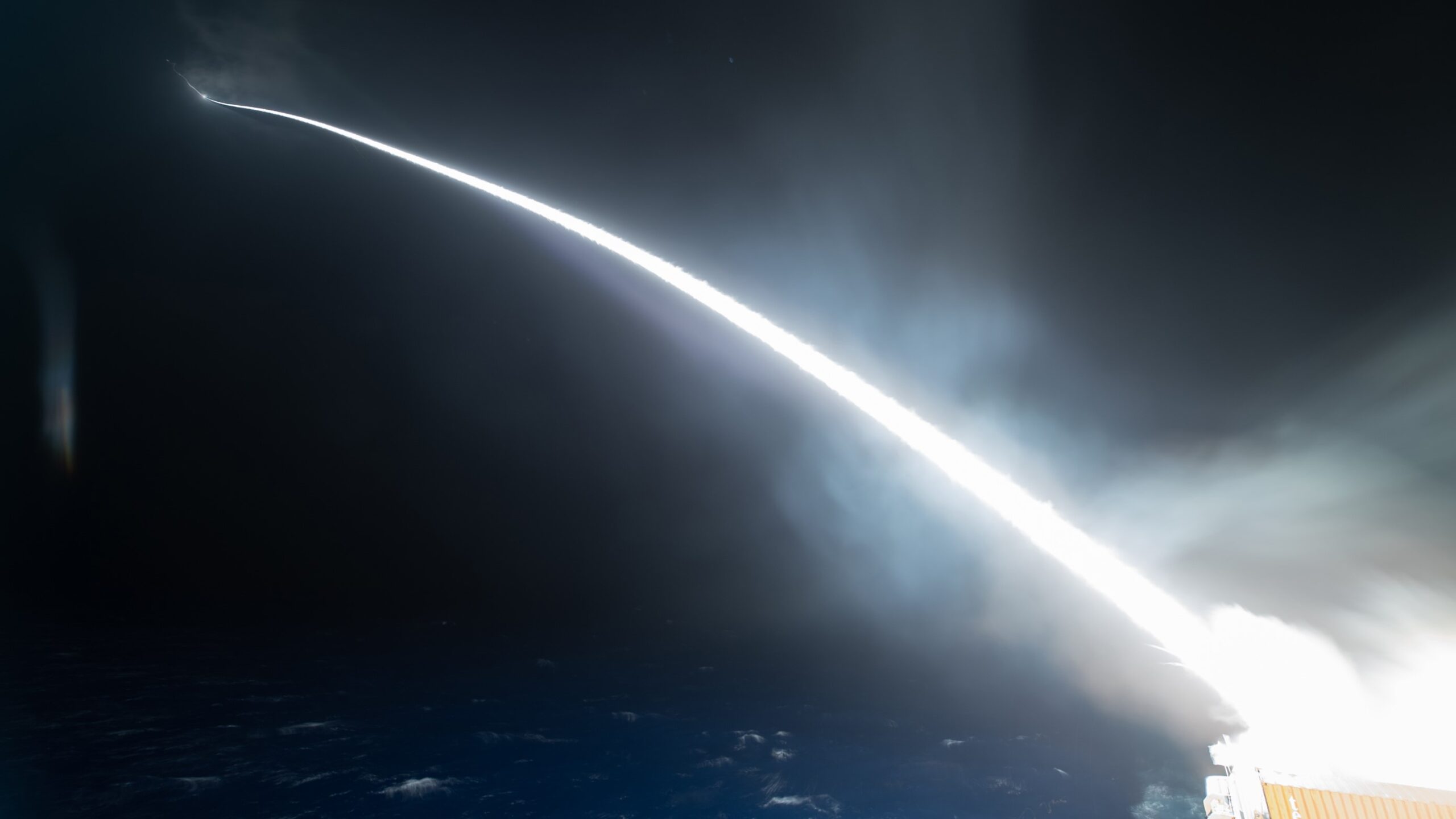
A photo of the C-Dome system being live fired. (Israeli MoD)
JERUSALEM — Israel’s naval version of the Iron Dome air defense system, called C-Dome, successfully completed a new series of tests aimed at countering “existing and future threats,” the Israeli military said, in what could be a business boost as maker Rafael eyes potential sales abroad.
The tests, the second in a series announced last year, took place just prior to Israel’s larger, multi-week Firm Hand exercises and involved “integrat[ing] shipboard systems with Israel’s multi-tier defense array and test[ing] new technologies to enhance the air and missile defense multi-tier array’s operational effectiveness at sea and on land,” the Israeli Ministry of Defense said last week. “The success of the tests is another significant milestone in the array’s development to counter existing and future threats in various combat arenas.” Specifically, the military said C-Dome aided in defense against rockets, cruise missiles and drones.
Israeli Minister of Defense Yoav Gallant said the C-Dome “constitutes a significant leap forward in our defense capabilities, and ensures the Israeli defense establishment’s superiority and operational capabilities in the face of growing threats in the maritime arena.” Ran Gozali, Rafael’s executive vice president and head of Land and Naval Systems, also praised the success of the tests, calling them a “technological breakthrough.”
Rafael says the system is already operational in the navy on Sa’ar 5 corvettes, and according to the Ministry of Defense, then new tests were a significant step towards achieving the final operational capability of the C-Dome system on the Israeli Navy’s Sa’ar 6-class corvettes.
Watch the amazing video 👇🏻
Video Credit: Israeli Ministry of Defense pic.twitter.com/EIaoPSh33L
— Rafael Advanced Defense Systems (@RAFAELdefense) May 29, 2023
In the recent tests the system operated abroad a Sa’ar 6 corvette, along with additional systems in Israel’s multi-tier air defense array, Moshe Patel, the Director of the Israel Missile Defense Organization said. He did not specify which other additional systems but did note that the exercises involved “connectivity between systems on-board with those on land, and a new radar developed to protect Israel’s exclusive economic zone.”
The head of Israel’s Material, Technology and Logistics Command, Rear Admiral Ariel Shir, said the test included both “an improvement in the existing systems, and a proof of capability for a new anti-aircraft missile, that significantly improves the defense envelope of the defense ships, both independently and as part of the national anti-aircraft network.”
The importance of air defense was thrown into stark relief earlier this week after Iran claimed it had developed a hypersonic missile. In response, Gallant told Israeli soldiers today that “to any such development, we have an even better response — whether it be on land, in the air, or in the maritime arena, including both defensive and offensive means,” according to an MoD statement.
The C-Dome tests were the second in a series that were announced in the last year; the first took place in November 2022. The new tests build upon last year’s, in which the C-Dome was operated on the INS Oz, one of the new Sa’ar 6 corvettes. At the time Israel said it had “identified threats and successfully intercepted them by launching Iron Dome interceptors towards them from the sea.”
The Sa’ar 6 ships, equipped with Israel Aerospace Industries’ MF-STAR AESA radar, are designed to protect Israel’s economic zone off the coast, including gas rigs. The four ships, dubbed Magen, Oz, Victory and Independent, were declared operational in April.
The C-Dome was developed by Rafael Advanced Defense Systems, which also makes Israel’s Iron Dome and David’s Sling air defense systems. These systems are all part of Israel’s multi-layered air defense network that also includes Arrow 2 and Arrow 3, the top tier of interceptors for long-range ballistic missile threats.
Courting Customers Abroad
Far beyond Israeli shores, Rafael has been offering C-Dome to potential customers around the world.
The company spotlighted C-Dome at IMDEX in Singapore earlier this year and advertised a new modular configuration of the system, called a Mission Module configuration — is basically a portable and compact version of C-Dome that can be placed on a ship and connected to the ship’s systems with what the company called “open architecture” and “plug and play.”
The idea is that it could be put on a variety of ships, such as support vessels to give advanced air defense capabilities offshore. At IMDEX Rafael displayed the Module version on an illustration of an NVL group offshore patrol vessel (OPV), similar to the Arafura class operated by Australia, which hints at potential users being countries that have this kind of vessel or are procuring similar vessels.
Rafael has confirmed that it has been in talks with Australia regarding the C-Dome Mission Module configuration. The company also said it was looking at other potential customers, expanding beyond the Asia-Pacific region to the European market with countries like the Netherlands said to be considering the system. But the company said it could not elaborate beyond that.
Army eyes TBI monitoring, wearable tech for soldiers in high-risk billets
“We are also looking at what additional personal protective equipment we can provide to our folks, especially instructors and others who are routinely exposed to blast pressure,” said Army Secretary Christine Wormuth.


























